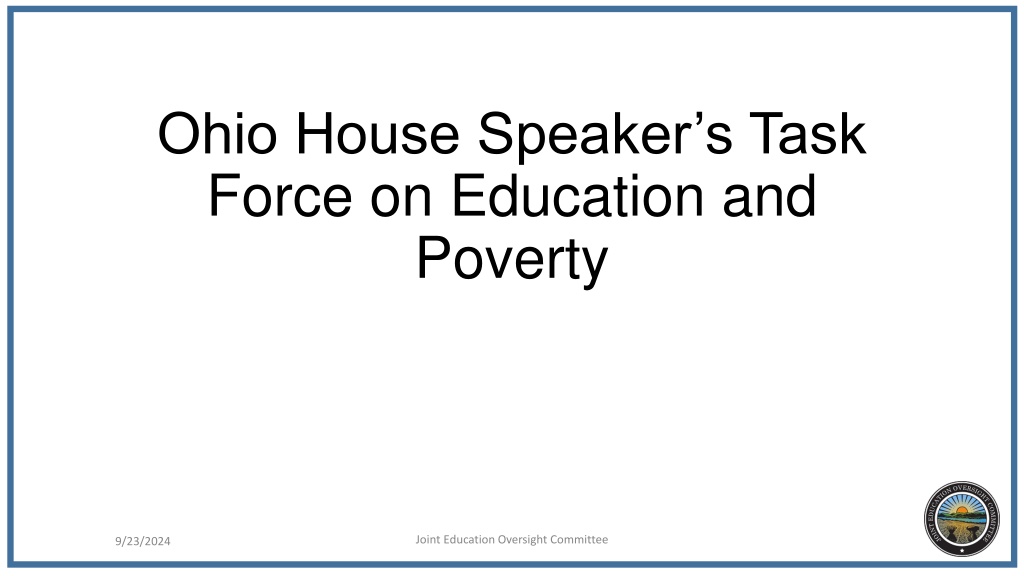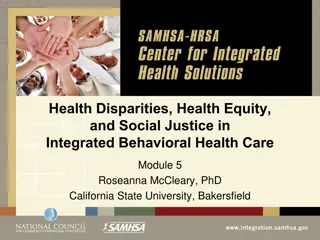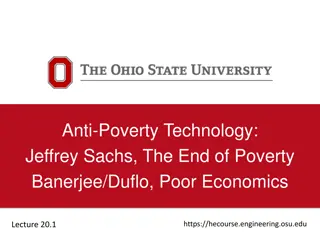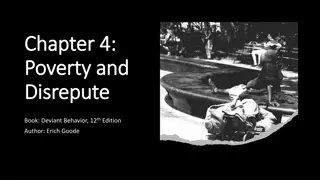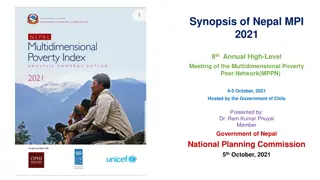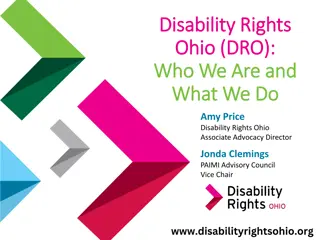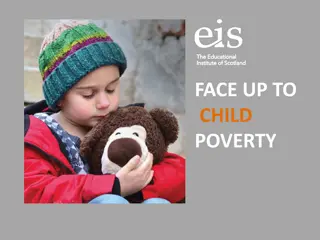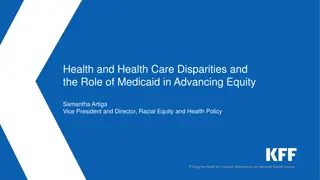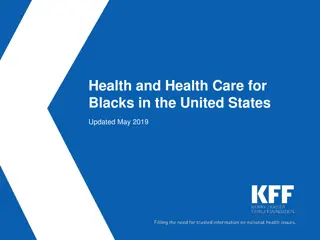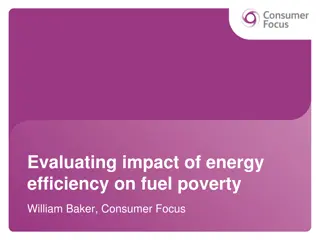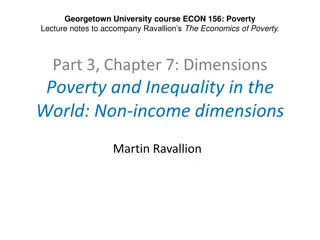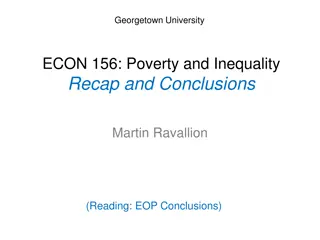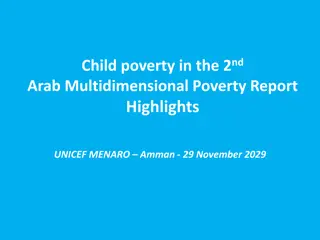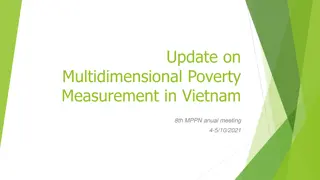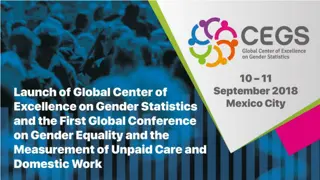Understanding Poverty and Education Disparities in Ohio
Explore the various factors contributing to education and poverty disparities in Ohio through data on achievement gaps, graduation rates, dropout rates, and risk of developmental delays in children. Delve into the conditions of poverty in different counties in Ohio, highlighting situational and generational poverty. Learn about the hidden rules and different kinds of poverty, shedding light on the complex interplay between economic class and societal norms.
Download Presentation

Please find below an Image/Link to download the presentation.
The content on the website is provided AS IS for your information and personal use only. It may not be sold, licensed, or shared on other websites without obtaining consent from the author. Download presentation by click this link. If you encounter any issues during the download, it is possible that the publisher has removed the file from their server.
E N D
Presentation Transcript
Ohio House Speakers Task Force on Education and Poverty Joint Education Oversight Committee 9/23/2024
Achievement Differences 35.00% 30.00% 25.00% 20.00% 15.00% 10.00% 5.00% 0.00% 2006 2007 2008 2009 2010 2011 2012 2013 2014 2015 Race Difference (W-B) ED Difference ED - Race Ohio s 3rd Grade Reading Test Data
Percent of Dropouts by Race and ED 80% 70% 60% 50% 40% 30% 20% 10% 0% Black White ED Non ED 2016 2015 2014 2013 2012 From ODE Interactive Report Card
Graduation Differences 70% 60% 50% 40% 30% 20% 10% 0% 2014-2015 2013-2014 W-B 2012-2013 NED-ED 2011-2012 Race - ED 2010-2011 From ODE Interactive Report Card
Risk of Developmental Delay in Children 4mo -5yr by Income Level 100 80 60 40 20 0 Low Risk Mod Risk High Risk 0-199 FPL 200-299 FPL 300-399 FPL >400 FPL From the US Census Bureau s National Survey of Children s Health in 2010/11
Conditions of Poverty in Ohio 1. Athens 2. Scioto 3. Meigs 4. Gallia 5. Pike . 84. Putnam 85. Medina 86. Geauga 87. Warren 88. Delaware From US Census Bureau
More than money Situational and Generational Poverty Payne s hidden rules of economic class Vance s hillbilly culture
Different Kinds of Poverty Situational poverty is generally caused by a sudden crisis or loss and is often temporary. Events causing situational poverty include environmental disasters, divorce, or severe health problems. Generational poverty occurs in families where at lest two generations have been born into poverty. Families living in this type of poverty are not equipped with the tools to move out of their situations. Teaching with Poverty in Mind, p.6
Hidden Rules In wealth, to be introduced or accepted, one must have an individual already approved by that group make the introductions. Yet to stand back and not introduce yourself in a middle-class setting is not the accepted norm. And in poverty it is not unusual to have a comment made about the individual before he/she is ever introduced. A Framework for Understanding Poverty, p.44
Hillbilly Culture While I recognized that things weren t perfect, I also recognized that our family shared a lot with most of the families I saw around me. Yes, my parents fought intensely, but so did everyone else s. Yes, my grandparents played as big a role in my life as Mom and Bob did, but that was the norm in hillbilly families. We didn t live a peaceful life in a small nuclear family. We lived a chaotic life in big groups of aunts, uncles, grandparents and cousins. This was the life I d been given, and I was a pretty happy kid. The Hillbilly Elegy, p. 69
Impact on Education Environmentally Suppressed Cognitive Function Social-Emotional Developmental Delays Increased Dropout and Decreased Graduation Rates
Dropout Prevention and Recovery Alternative Schools study by American Youth Policy Forum reviewed program evaluations of 100 alternative school programs around the country. Findings indicate that the alternative schools evaluated showed that in comparison to a control or selected comparison group, students in these environments had increased attendance rates and higher completion rates. In some cases, achievement scores were higher, but those data were not considered in all cases. Promising Evidence American Youth Policy Forum, Some Things Do Make a Difference (1998)
Social-Emotional Developmental Delays Looping is the practice of keeping a classroom of students with the same teacher for more than one year of instruction. So, when the children go from first to second grade, for example, they stay in a group together with the same teacher. Several studies have shown increases in student achievement and higher attendance (Hampton, Mumford and Bond, 1997), as compared with a group of students chosen for comparison purposes. Promising to Moderate Evidence
Environmentally Suppressed Cognitive Function Early childhood education has been cited as the most proven educational treatment for this issue. Children coming from poverty to school need more time and support to learn the basic skills for school. Two seminal research projects that address this are: the Perry Preschool Project in Michigan and the Abecedarian Project in North Carolina. Both studies began in the mid- 20th century and have monitored the progress of participants through school and into adult life.
Effect Sizes Project At End of Treatment At an Intermediate Point 0.33 SD At the End Point Perry Preschool Project 0.87 SD 0.33 SD Abecedarian Project 1.1 SD 0.33 SD 0.50 SD Strong Evidence Barnett (2011)
